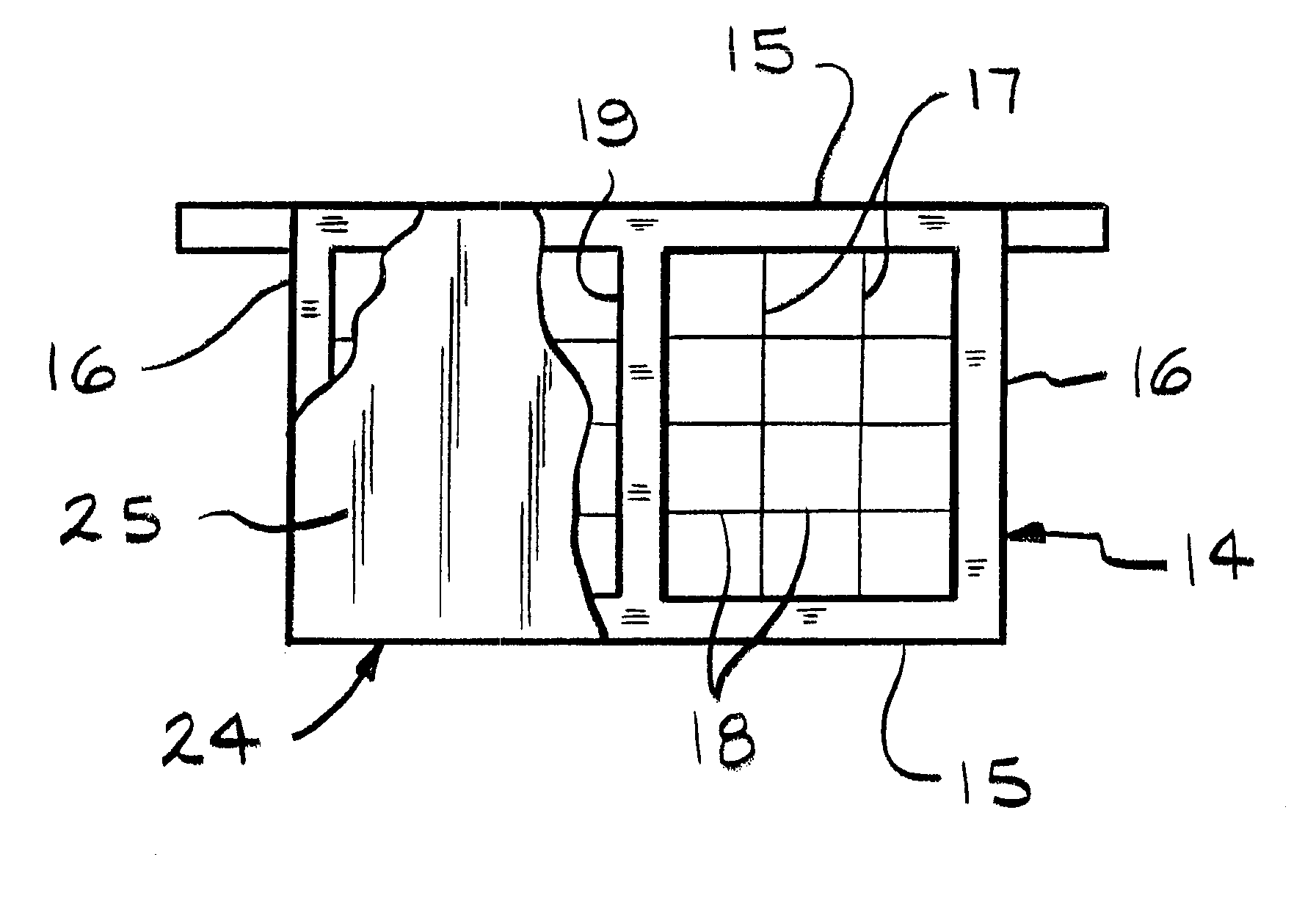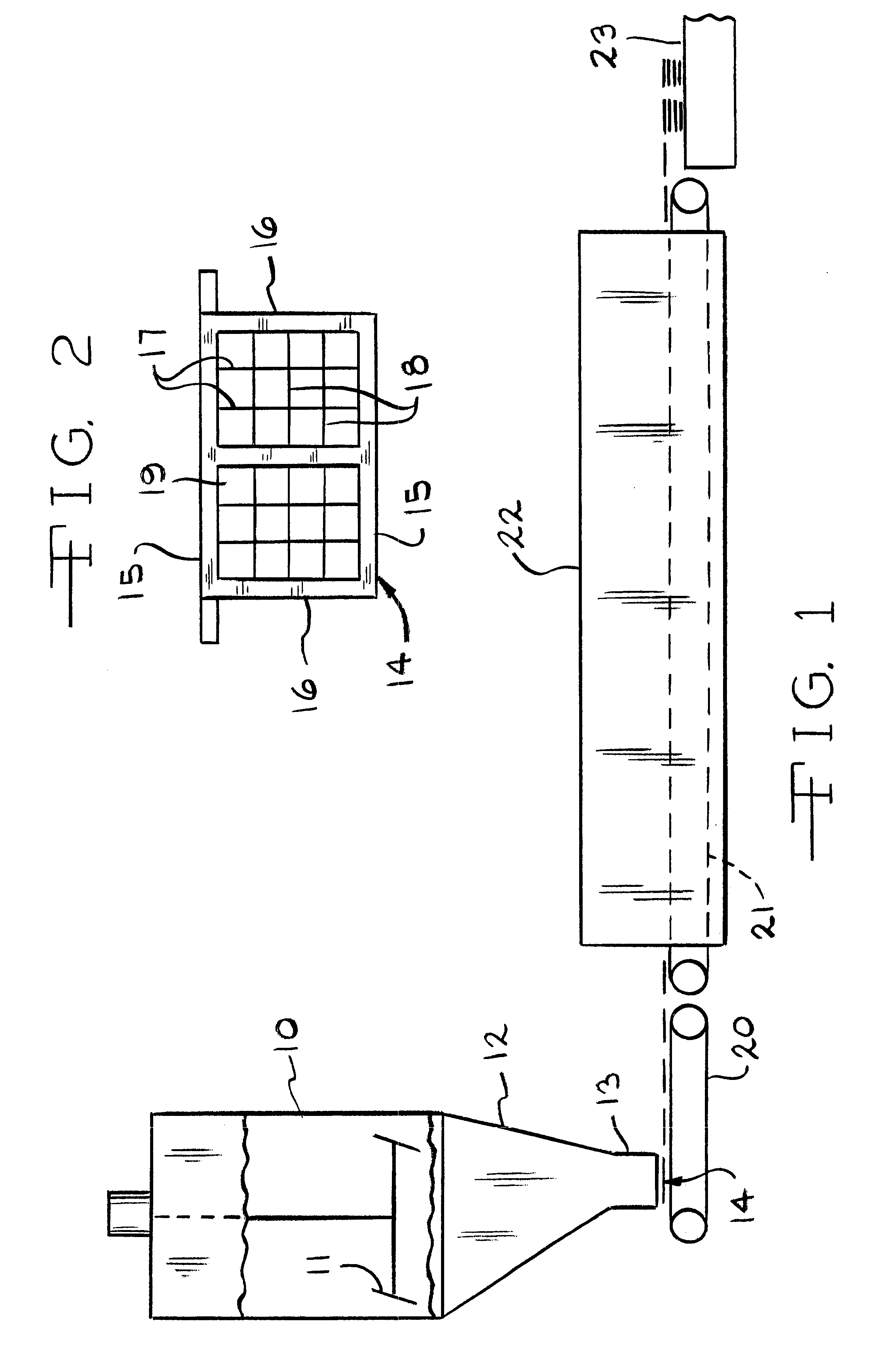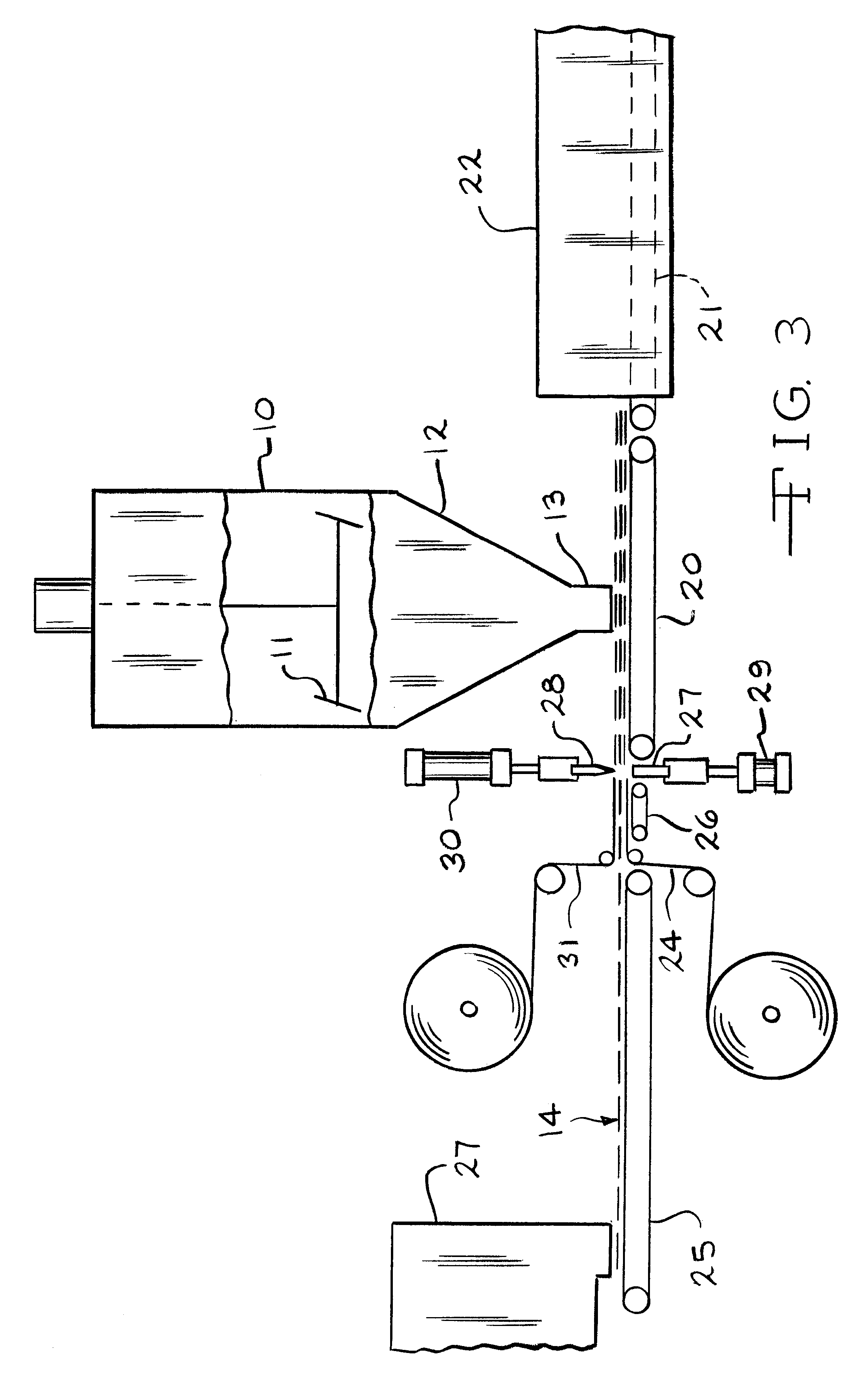Battery paste
a technology of battery paste and powder, which is applied in the field of battery paste, can solve the problems of affecting the production efficiency of battery paste,
- Summary
- Abstract
- Description
- Claims
- Application Information
AI Technical Summary
Benefits of technology
Problems solved by technology
Method used
Image
Examples
examples 2 and 3
The procedure described in Example 1 was repeated except that the total charge of glass fibers was 204.3 g, and the initial charge was 150 g of the fibers; the total charge of water was 750 ml in Example 2 and 600 ml in Example 3, and the initial charge was 575 ml in Example 2 and 425 ml in Example 3. The battery paste of Example 2 had a density of 50.97 g per inch.sup.3 ; that of Example 3 had a density of 54.50 g / inch.sup.3.
A blend of two or more glass fibers having different diameters and, therefore, different surface areas, usually expressed in m.sup.2 / g, can be used to produce a paste according to the instant invention. A smaller diameter fiber has a greater available hydrophilic surface area than a larger diameter fiber and, therefore, will be able to absorb more water during the paste mixing procedure. The relationship between glass fiber diameter and surface area expressed as m.sup.2 / g is influenced by the density of the fiber, which is typically in the 2.4 to 2.6 g / cc ran...
examples 4 and 5
The procedure described in Example 1 was repeated, using commercial equipment, to produce additional battery pastes. The initial and total charges of glass fibers, the initial and total charges of water, the PbO charges and the sulfuric acid charges are given in the following table:
The battery paste of Example 5 can also be produced by uniformly dispersing the expander in a mat of the glass microfibers (average diameter 3 microns) so that a given area of the mat contains 25 pounds of the microfibers and 12.5 pounds of the expander, and charging that area of the mat to the mixer, followed by 35 kg of water and, after initial mixing, an additional 50 kg of water, 125 pounds of sulfuric acid, and 600 kg of the Barton oxide. Similarly, other additives can be dispersed in the mat in such proportions that a given area of the mat contains the desired charge of glass fibers and of the desired additives.
Accordingly, in one embodiment, the instant invention is an article of manufacture which ...
example 6
A battery paste is produced by charging 525 ml water, 1.5 g ground glass and 100 g glass fibers having an average diameter of substantially 3 microns to a Hobart mixer; mixing the fibers and water for about 5 minutes by operating the mixer at 85 revolutions per minute; adding 3405 g PbO to the mixer and continuing mixing until all of the free water has been mixed with the PbO; charging 175 ml water and 38.2 g glass fibers having an average diameter of substantially 3 microns to the mixer and continuing mixing until there is a uniform paste in the mixer; charging 1.55 ml sulfuric acid containing 49 per cent of H.sub.2 SO.sub.4 diluted to 155 ml with water, to the mixer and continuing mixing for 3 minutes; and charging 130 ml sulfuric acid containing 49 per cent of H.sub.2 SO.sub.4 to the mixer and continuing mixing for about 10 minutes until the paste in the mixer cools to 100.degree. F.
The glass used in Example 6 is disclosed by F. J. Williams and J. A. Orsino, supra. It is produced...
PUM
| Property | Measurement | Unit |
|---|---|---|
| diameter | aaaaa | aaaaa |
| diameter | aaaaa | aaaaa |
| temperature | aaaaa | aaaaa |
Abstract
Description
Claims
Application Information
 Login to View More
Login to View More - R&D
- Intellectual Property
- Life Sciences
- Materials
- Tech Scout
- Unparalleled Data Quality
- Higher Quality Content
- 60% Fewer Hallucinations
Browse by: Latest US Patents, China's latest patents, Technical Efficacy Thesaurus, Application Domain, Technology Topic, Popular Technical Reports.
© 2025 PatSnap. All rights reserved.Legal|Privacy policy|Modern Slavery Act Transparency Statement|Sitemap|About US| Contact US: help@patsnap.com



